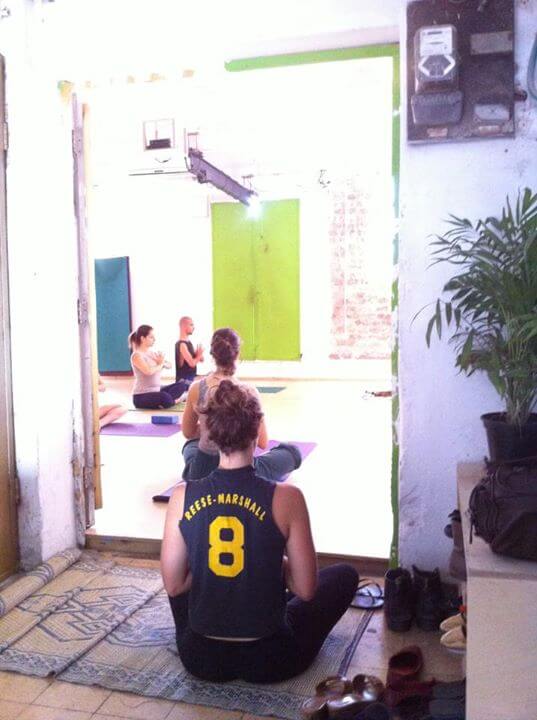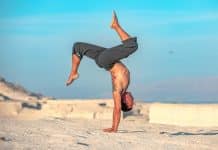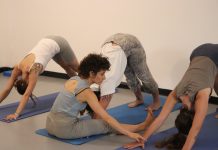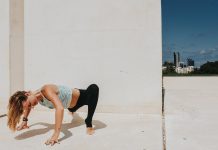In Vijnana yoga practice, we prioritize listening to the body’s feelings and state of consciousness. There is no necessary or extravagant physical performance – training is internal and personal, suitable for everyone in any physical condition.
Vijnana Yoga is based on the following seven principles, which can be applied both physically and consciously:
Relaxing the Body: With exhalation we release the weight of our bodies, giving in to gravity.
- Quieting the Mind: Even when the gaze is concentrated at a distant point, it can actually turn inwards. With each breath, the eyes move toward the back of the skull; we observe ourselves and our practice from an inner silence.
- Focusing through Intention: Before making the pose, we imagine it and the way into it. By imagining the movement, we devote ourselves entirely to it. With each breath, we reaffirm our commitment to the pose and our intention.
- Rooting: We deepen our connection with the earth, letting the weight of the body sink into the place where it makes contact with the floor. As the roots of a tree branch out and spread deep into the ground, so the branches to expand into the sky.
- Awareness of Breath: Breathing creates movement even when the body is inactive, creating gentle movement in the abdomen and thorax. Breath supports the body from within.
- Connection: Always be aware of opposition. To go up, go down. To go forward, shift back. Reaching for the left, steady yourself on the right. When the parts of the body are connected to each other in a continuous and flowing relationship, a harmonious unit is created.
- Expanding – Elongating and Widening: Between the core of the body and the earth, a pulsation created. The legs are connected to the center and elongated. The body gathers and spreads. The consciousness gathers in and expands. These expansions create space for easy and dynamic movement.
In Vijnana classes we will practice sitting (dhina), breathing exercises (pranayama) and yoga poses (asanas).
During meditation, we “just sit”, looking at the breath, without any other intention beyond sitting. The goal is not to have moments of elation, or even to achieve a sense of “emptiness”. The goal is simply to sit. Observe and develop vigilance.
“This ‘workout’ takes root when it is properly performed over a long period of time.” (Patanjali Sutra Yoga, Sutra I.14, Orit San Gupta).








